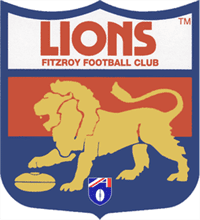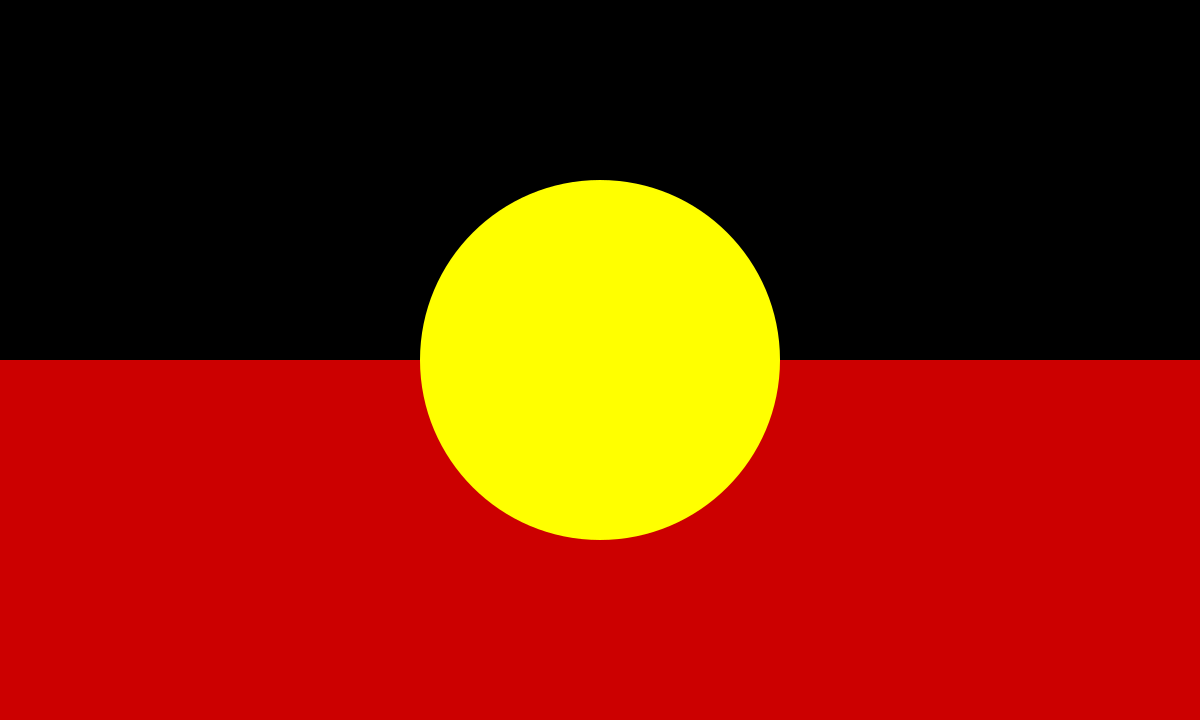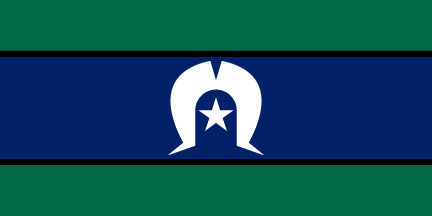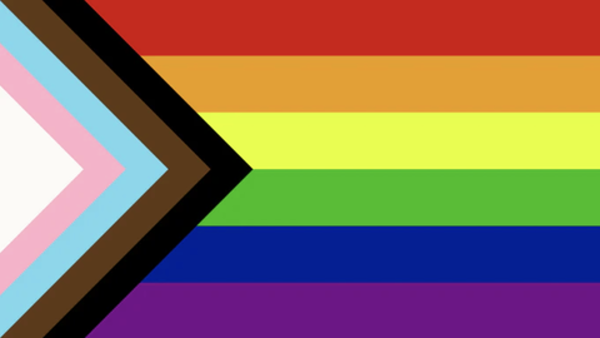
A year after changing the color of the FFC logo of their jumper from blue to white Fitzroy discarded the Gorilla mascot, which had become the subject of some ridicule from opposition supporters and adopted the now familiar Lion mascot to reflect "the never say die spirit of the club" and also to provide a more aggressive and noble image.
Fitzroy again reached the finals in 1958, but unexpectedly in the last round of the home and away season, lost their game against Hawthorn and forfeited the double chance and possibly the premiership. In 1959 they missed the finals by two Premiership points. However in the same year Fitzroy won their first night premiership, defeating Hawthorn by 30 points. 1960 remains one of Fitzroy's most successful years, where they reached the Preliminary Final and finished 3rd. The Second Semi-Final that year between Fitzroy and Melbourne saw the first and only occurence of brothers coaching opposing sides in a final. Unfortunately Melbourne's Norm Smith triumphed over Fitzroy's Len Smith winning by 62 points. There was no chance of a re-match as the following week Fitzroy lost the preliminary final to Collingwood by five points.
Fitzroy again missed the finals by two points in 1961 and then slipped to tenth in 1962. The next few years were forgettable ones with Fitzroy continually on or close to the bottom of the ladder. They finished last in 1963, 1964 and 1966, failing to win a game in 1964. 1966 also saw the last VFL match at the Brunswick St Oval after Fitzroy was unable to achieve a satisfactory lease from the Fitzroy council. After considering offers from Preston and St Kilda, Fitzroy elected to share Princes Park (now Optus Oval) with Carlton for the 1967 season. This ended Fitzroy's 83 year association with the Brunswick St Oval. Two years later in 1969 the club moved to the Junction Oval at St Kilda where they stayed for a number of years.
Moving grounds did not help Fitzroy to become successful. Kevin Murray became captain in 1967, under coach Bill Stephen. The Lions altered their uniform again by adding a small Lion to the left breast of their guernsey in 1967.
In 1974, Fitzroy made further changes when they lightened the maroon to red and changed the white FFC to gold in readiness for colour television. They even wore gold shorts for away matches.
From 1960 to 1979, Fitzroy did not contest a VFL final series, with their highest position in that time, a respectable 6th in 1971, in a year that John Murphy won the club's best and fairest. However in that nineteen year period the club was blessed with some fantastic players including the lionhearted Kevin "Bulldog" Murray who in 1969 at the age of 31 became the oldest player to win a Brownlow. Fitzroy also made VFL/AFL history in 1970 becoming (with Richmond) the first club to play on a Sunday and in the same match to play before the monarch Queen Elizabeth II. This second occurence has never been repeated by any other club since. Fitzroy also played Geelong in the first ever match at Waverley (VFL) Park in the same year. Fitzroy's gradual improvement through the late 70's after such a long unsuccessful period was capped off in 1978 when Fitzroy shocked the football world by defeating a highly fancied North Melbourne (the reigning day premiers) by 76 points to win the Night Premiership.
In 1979, Fitzroy with the aid of some big-name recruits, such as Robert Walls and Bernie Quinlan and also some home-grown talent made the finals for the first time since 1960, under new coach Bill Stephen (who had also coached the club previously from 1965 to 1970). It was a record-breaking and momentous year. Courageous rover Garry Wilson was one vote from winning the Brownlow Medal. Fitzroy won nine games in a row (a club record). Fitzroy thrashed Essendon by 81 points in the Elimination Final, their largest winning margin. Fitzroy kicked its highest ever score (and VFL score) against Melbourne, a whopping 36.22.238 to 6.12.48 winning by 190 points. While the 238 points is not a VFL/AFL record any longer the winning margin of 190 points still stands.
It was now Fitzroy entered their last period of sustained success in the VFL/AFL. Widely regarded as the glamour team of the nineties they came agonizingly close to tasting the ultimate success twice, but fell at the final hurdles. Fitzroy under new coach Robert Walls reached the finals in 1981 (its season ended by a 1 point loss to Collingwood), 1983 and 1984. Bernie Quinlan won the Brownlow Medal in 1981, sharing it with Barry Round of South Melbourne, (soon to become the Sydney Swans). It is perhaps 1983 that is rued by those associated with the club as the one that got away. For the first time ever for Fitzroy, all three grades (Seniors, Reserves and U/19's) played off in the finals in the same season. For the first time a Fitzroy player (Bernie Quinlan) kicked over a 100 goals in a season, finishing with 116. Fitzroy also defeated top of the ladder North Melbourne by 150 points. Fitzroy also scored their highest ever aggregate score for a quarter 12.6.78. It was the year they also unearthed three players who were to serve Fitzroy with distinction for much of the club's final years in the VFL/AFL competition. They were of course Paul Roos, Gary Pert and Richard Osborne. Unfortunately the hugely successful and centenary year 1983 was ended by a heartbreaking and controversial four point loss to eventual premiers Hawthorn in the Qualifying Final.
At the end of 1984, Fitzroy moved from the Junction Oval to a ground-sharing arrangement with Collingwood at Victoria Park. After a chaotic 1985, Fitzroy now in considerable financial difficulty, started off slowly in 1986, but eventually managed to win 13 straight to claw their way into the finals. Fitzroy and Essendon fought the closest Elimination Final in VFL/AFL history when Fitzroy, courtesy of a Micky Conlan goal in the dying minutes, clawed their way to a 1 point victory. A 5 point victory over the Sydney Swans followed the week after and Fitzroy reached the Preliminary Final for the first time since 1960. Unfortunately injuries to Michael Reeves, Matt Rendell and Gary Pert took their toll and as in 1983 Hawthorn ended Fitzroy's dream to the tune of 56 points. It was Fitzroy's last senior finals appearance.
In 1987, Fitzroy in acute financial difficulty decided to leave Victoria Park for Carlton's Princes Park, their former home from 1967-68. Financial matters were so bad that the players and most of the Board voted for the club to relocate to Brisbane, as the Brisbane Lions. However a 'savior' was found and the club president Leon Wiegard determined on the basis of this that the club would stay in Melbourne. There was increasing pressure behind the scenes to keep the club viable and to pay the players who were vital to Fitzroy achieving success.
Despite a desperate struggle at long last the deteriorating financial situation at Fitzroy began to bite deeply. In 1989, a Fitzroy team appeared in a day Grand Final for the last time, when the Fitzroy Reserves led by retiring players John Ironmonger, Grant Lawrie and Leon Harris defeated Geelong by five points in a stirring come from behind win. The coach that day, Robert Shaw would later coach the club's senior team for a number of years. 1989 was also the year that Fitzroy negotiated a favorable merger with Footscray to become the "Fitzroy Bulldogs". In the end the proposed merger did not go ahead, being stymied by the members and supporters of Footscray who saved their club and allowed it to continue on in its' own right.
In 1991, financial matters were so grave that the club launched a successful 'Save the Lions' appeal, which raised $800,000 and managed to give the club some breathing space. However on-field in 1991 Fitzroy were on the end of some very large defeats. However they won three out of their last four matches for the 1991 season including an amazing and quite unexpected victory over top of the ladder West Coast Eagles in the last round.
1992 saw the club's last ever appearance in a VFL/AFL Grand Final of any description when they lost by 65 points to Hawthorn, (the powerhouse side of the 80's and early 90's) in the Grand Final of the pre-season night series. A reasonable year in 1993 and the formation of the nucleus of a good young team brought hopes that Fitzroy would revive on the field, which in turn would result in an financial turn-around. However the poor financial situation and the AFL's priority draft rules saw the exodus of many fine Fitzroy players at the end of 1993 including Alistair Lynch, Paul Broderick and Michael Gale. Club stalwarts Paul Roos and Matthew Armstrong departed at the end of 1994. In an effort to improve their financial situation Fitzroy took advantage of a much more generous ground sharing offer from Footscray and moved their home base again, this time to the Western Oval for the start of the 1994 season. It was here that Fitzroy would see out their final years in the AFL. Rumors also abounded regarding the possibility of merging with other clubs, including definite talks between Melbourne and Fitzroy in 1994 which eventually came to nothing.
1995 and 1996 were sad years. Berefit of many senior players and experience (with many former Fitzroy greats playing at other clubs) and mired in a debt estimated at over $2 million, Fitzroy struggled on the field, winning only one game in 1995 and the same in 1996. At last in early 1996 the Board of Fitzroy led by Chairman Dyson Hore-Lacy bowed to the inevitable and despite offers from many other clubs sought a merger with North Melbourne.
Fitzroy's last win in the AFL came against Fremantle on May 18th 1996. Having struck an agreement with North Melbourne in early May, Fitzroy was on the verge of merging to become the North-Fitzroy Kangaroos. However the Nauru Insurance Company, Fitzroy's main creditor, appointed an administrator to recover their debt which removed any power that the Fitzroy Board had to make decisions and successfully conclude the merger with North Melbourne. Fitzroy's administrator Michael Brennan favored a merger with Brisbane, which was endorsed by the AFL Commission and the other club presidents on 4th July 1996. This merger of the club operations of Fitzroy and the Brisbane Bears at the AFL level, formed the Brisbane Lions.
After 100 years of competition in the VFL-AFL, Fitzroy said goodbye to the city of Melbourne in Round 21 1996 in front of 48,884 people, against Richmond. They lost lost by 151 points. It has been called by many as "the saddest day in 100 years of AFL football". A lap of Fitzroy's past players and heroes from their long and distinguished history took place around the MCG before the match, before the final team ran through the banner followed by masses of children in a sea of Fitzroy colours.
The following week September 1st 1996, saw Fitzroy's last and 1,928th match in the VFL/AFL. The players with the club emblem tattoed on their arms entered the ground through a banner displaying the names of every player who played 90 or more games for Fitzroy. Fitzroy lost by 86 points. Brad Boyd was the last captain, Simon Atkins kicked the last goal and Martin Pike was later voted the last Fitzroy Best and Fairest. A lone singer sang "Auld Lang Syne" as the last ever Fitzroy team departed the VFL/AFL competition, in which their club had been a participant in for the last 100 years.
Get our Newsletter





